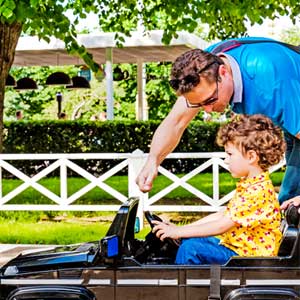Ride-on toys are becoming increasingly popular among parents as a way to provide their children with hours of fun and entertainment.
In this guide, we will explore the various safety features and considerations that parents should keep in mind when choosing a kid’s ride-on car.
What’s in this guide
- What safety features do kids’ electric cars have?
- Kids ride-on car age and weight restrictions
- How to teach your child to drive safely
- What parents can do to ensure their child uses the car safely
- Do kid’s ride-on cars have safety certifications?
- How to maintain kids your kid’s ride-on car
- How to maintain kids your kid’s ride-on car
- Kids ride on cars are sold with lots of safety features such as LED lights, seatbelts and parental remote controls.
- Most kids ride on cars sold in the UK are compliant with the EN71 safety standard, which is the European standard for toys.
- Store ride on toys indoors in an area sheltered from the elements, such as a garage, shed or spare room.
What Safety Features do Kids’ Electric Cars Have?
There are many safety features built into kids’ electric cars. These include seat belts, LED headlights for better visibility, and a parental remote control so that parents can take control if their child gets carried away. It is essential to check the specific features of a particular model before purchasing to ensure it meets your needs and safety standards.
Other safety features include seatbelts, stabilisers for ride-on motorbikes, and a horn so that children can make their presence known on their driving adventures.
Kids Ride-On Car Age and Weight Restrictions
The age and weight restrictions for kids’ ride-on cars vary depending on the specific toy and manufacturer. Generally speaking, electric cars are recommended for children aged 3 to 8 years old and have a weight limit of around 30-35kg. However, push along cars can be driven by 1 year olds and have a general weight limit of 25kg.
It’s important for parents to be aware that some manufacturers may have different weight and age limitations for their cars. It is always recommended that parents check the product’s specifications or consult the manufacturer’s guidelines before purchasing a car to ensure that the toy is appropriate for their child’s age and weight.
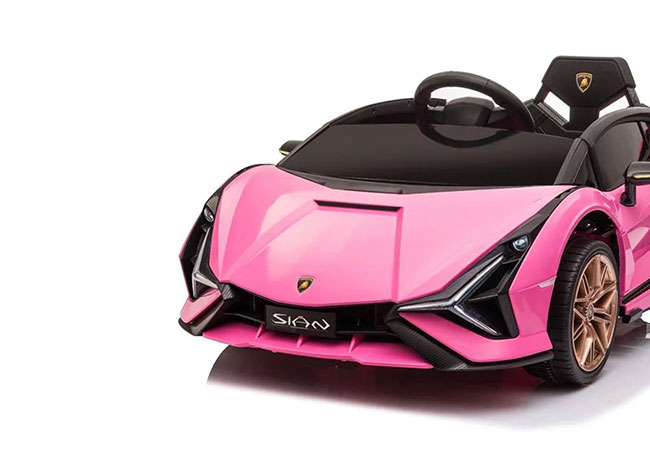
How to Teach Your Child to Drive Safely
Safety starts with guidance. And when it comes to driving ride-on toys, parents should begin teaching their children early, allowing them to grow into confident little drivers as quickly as possible.
Firstly, kids need to develop the necessary spatial awareness and motor skills to balance and correctly steer, stop and accelerate the car. Then, show them how to use the ride-on vehicle’s realistic features, such as the steering wheel, LED lights, horn and, on some models, wing mirrors.
If you fancy taking your driving instructor career even further, consider buying toy cones and traffic lights. These props are excellent for making driving courses, which help kids perfect their driving skills, ultimately enhancing their safety when operating the car.
What Parents Can do to Ensure Their Child Uses The Car Safely
Our job as parents is to provide our children with a safe, comfortable and enjoyable environment where they can thrive. To keep them safe as they drive while also upping the fun levels, follow these tips:
- Always have your 2.4Gz parental remote control close to hand so you can override the car’s operation if your child rides over their maximum speed.
- Ensure your child sits snugly within the toy’s seat and they’re strapped in using the safety harness. The new driver should be able to comfortably reach the accelerator and brake pedals.
- Don’t let your kids drive their ride-on without at least one grown-up supervising. It’s up to us adults to be their extra eyes, watching out for dangerous situations and ensuring they have plenty of room to fine-tune their driving skills.
- Create a safe riding area by moving obstacles, such as furniture and sharp-edged objects, out of the driver’s potential route.
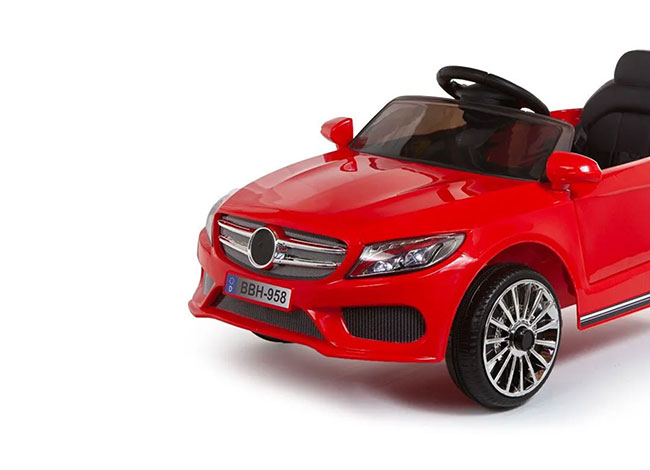
- Check for faults. Give your kid’s car a thorough inspection. Ensure there aren’t any exposed electrics or broken plastic and that the wheels, brakes, seat belts and other parts work.
- Strap on their helmet. Similar to bikes, scooters and other outdoor riding equipment, we strongly recommend your child wears a helmet when driving a ride-on toy. Remove the battle of getting it on them by choosing one with a design they love.
- Fasten their safety belt. While their car is a smaller version of your own, the same rules apply. Always strap in your child using the adjustable seat belts provided before they set off.
Do Kid’s Ride-On Cars Have Safety Certifications?
Safety accreditations for kids’ electric cars in the UK include compliance with the European standard for toys EN71 and certification by British Standards Institution (BSI).
These accreditations ensure that the electric vehicle meets specific standards for construction, materials, performance, and labelling to protect children from potential hazards.
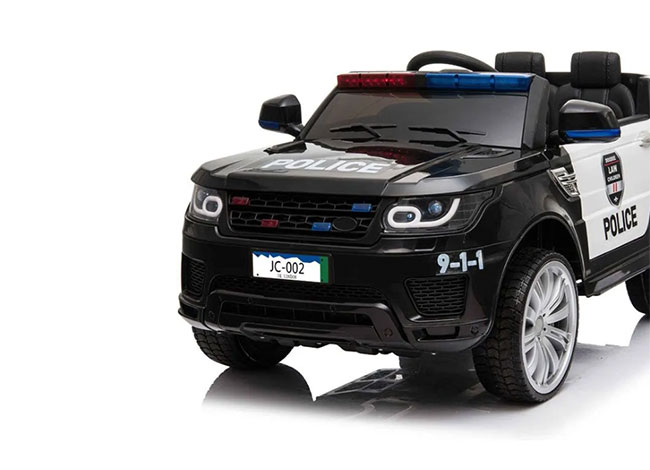
How to Maintain Kids Your Kid’s Ride-On Car
A ride-on car’s main components are the wheels, body and battery. To keep the toy in good condition, check these three main parts are functioning correctly before your child climbs aboard.
Vehicle maintenance includes:
- Buying replacement wheels when they start showing signs of wear and tear. Also, increase their longevity by remembering plastic tyres should stick to smooth indoor surfaces, while EVA foam or rubber wheels are better suited for outside terrains and can be driven on gravel driveways and grass.
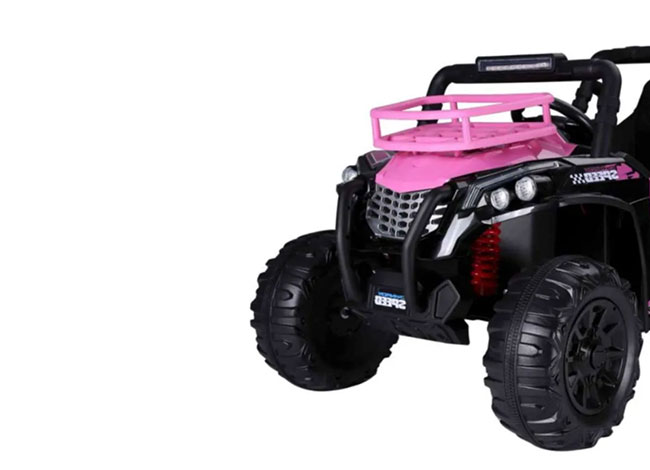
- Regularly clean the steering wheel, buttons and rims with a damp cloth and remove snacks and drinks.
- Store your electric ride-on toy indoors, away from bad weather. Leaving it outside, especially during rain or snow, will cause rust and damage the electrics.
How to Store Ride On Toys
Store ride on toys indoors in an area sheltered from the elements, such as a garage, shed or spare room. Storing these battery-powered kids’ cars outdoors and exposing them to rain, sunlight, or extreme temperatures will damage the toy over time. Also, consider using protective covers or tarps to shield the ride on from dust and moisture, helping preserve the car’s appearance and extend its lifespan.
About the Author
Hannah Hill
Entrepreneur, and mother of three. Hannah is a toy expert with 20+ years in the online toy industry, founding the Kidaroos website that sells 10,000+ toys per year. Hannah is always looking for new, innovative ways to keep everyone's kids active and energised in a world full of screens and social media and has been featured in publications such as Authority Magazine.


















